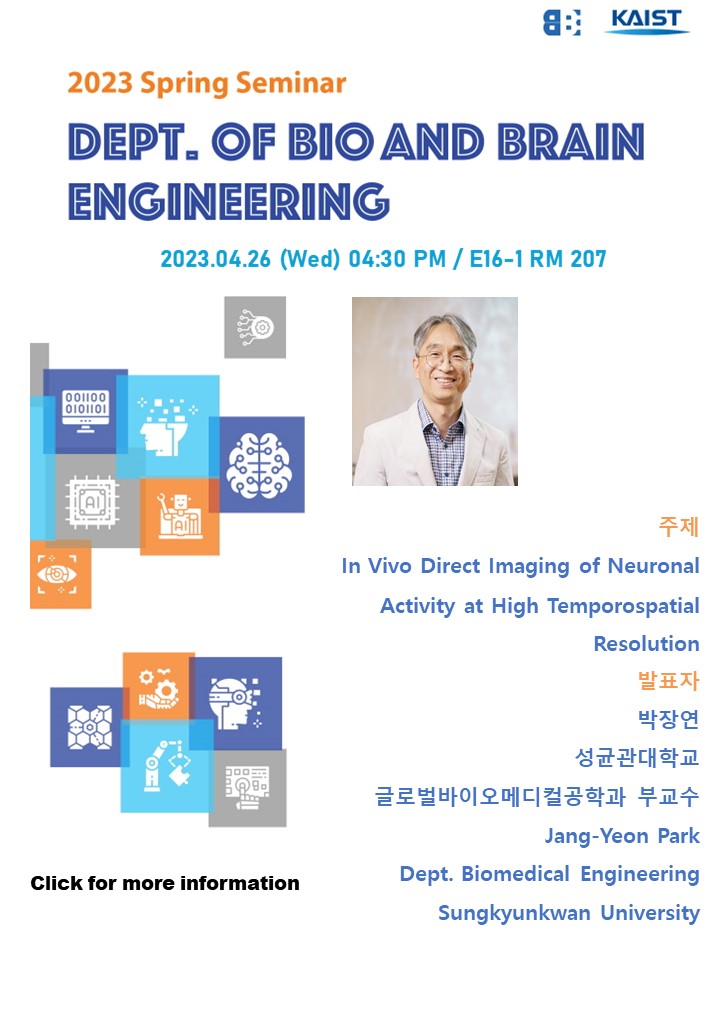| 연사 | 박장연 교수 |
|---|---|
| 소속 | 성균관대학교 글로벌바이오메디컬공학과 부교수 |
| 일시 | 2023.04.26, PM 4:30~5:45 |
| 장소 | E16-1 양분순빌딩 #207 |
1. 제목: In Vivo Direct Imaging of Neuronal activity at High Temporospatial Resolution
2. 연사: 박장연 교수 (Dept. Biomedical Engineering, Sungkyunkwan University)
3. 일시: 2023년 4월 26일 (수) 4:30~5:45pm
4. 장소: 양분순 빌딩 207호
ABSTRACT:
Advanced noninvasive neuroimaging methods provide valuable information on the brain function, but they have obvious pros and cons in terms of temporal and spatial resolution. Functional magnetic resonance imaging (fMRI) using blood-oxygenation-level-dependent (BOLD) effect provides good spatial resolution in the order of millimeters, but has a poor temporal resolution in the order of seconds due to slow hemodynamic responses to neuronal activation, providing indirect information on neuronal activity. In contrast, electroencephalography (EEG) and magnetoencephalography (MEG) provide excellent temporal resolution in the millisecond range, but spatial information is limited to centimeter scales. Therefore, there has been a longstanding demand for noninvasive brain imaging methods capable of detecting neuronal activity at both high temporal and spatial resolution. In this talk, I will introduce a novel approach that enables Direct Imaging of Neuronal Activity (DIANA) using MRI that can dynamically image neuronal spiking activity in milliseconds precision, achieved by data acquisition scheme of rapid 2D line scan synchronized with periodically applied functional stimuli. DIANA was demonstrated through in vivo mouse brain imaging on a 9.4T animal scanner during electrical whisker-pad stimulation. DIANA with milliseconds temporal resolution had high correlations with neuronal spike activities, which could also be applied in capturing the sequential propagation of neuronal activity along the thalamocortical pathway of brain networks. In terms of the contrast mechanism, DIANA was almost unaffected by hemodynamic responses, but was subject to changes in membrane potential-associated tissue relaxation times such as T2 relaxation time. DIANA is expected to break new ground in brain science by providing an in-depth understanding of the hierarchical functional organization of the brain, including the spatiotemporal dynamics of neural networks.
* The seminar will be held offline and online[https://kaist.zoom.us/j/89702859664] simultaneously.







